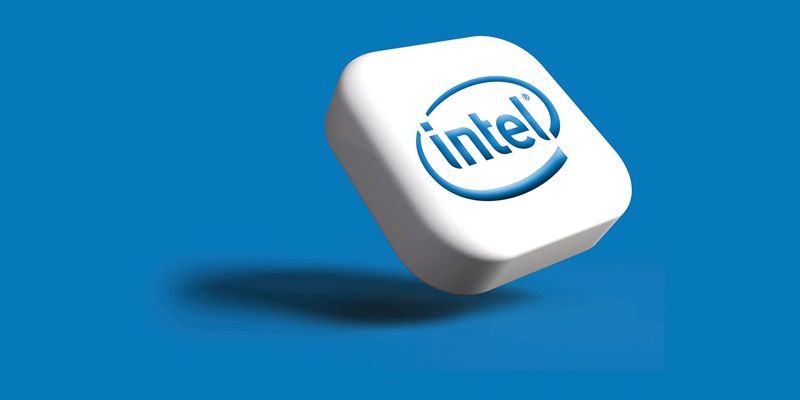Intel has long been a cornerstone in the technology world, continuously pushing the boundaries of what CPUs can achieve. In a notable strategic shift, Intel has unveiled plans for its upcoming CPU architectures, Arrow Lake and Panther Lake, which are expected to redefine performance and thermal characteristics. Set to counter AMD’s Ryzen 9000 series, the new Core Ultra 200 processors will be introduced under the Arrow Lake line in fall 2024, closely followed by the Panther Lake line in 2025. With a keen eye on maximizing performance output, Intel is not only upgrading its core technologies but also recalibrating its thermal management strategies. These steps are crucial for staying competitive against AMD, especially considering that AMD’s Zen 4 CPUs have set a high bar with innovations like the Ryzen 9 7950X, which operates near its 95°C TJMax threshold without compromising performance.
The upcoming CPUs from Intel aim to stretch thermal and power limits further than previous generations. Reports indicate that the new Arrow Lake and Panther Lake CPUs will feature a TJMax of 105°C, a noticeable increase from the 100°C threshold seen in the 13th and 14th-gen Raptor Lake CPUs. Although the Lunar Lake APUs, also part of Intel’s future lineup, will retain the 100°C TJMax, the increased thermal limit for the Arrow Lake and Panther Lake CPUs speaks volumes about Intel’s commitment to pushing technological boundaries. This 5°C increase is significant in the realm of CPU design as it offers more headroom for performance before thermal throttling activates to prevent hardware damage. Such changes could lead to more robust and efficient performance, aligning with broader trends in the industry where high TJMax values do not necessarily impair operational capabilities.
Strategic Thermal Management and Competitive Positioning
Intel’s decision to push the TJMax limits follows a trajectory set by AMD, which has implemented similar thermal strategies in its recent CPU architectures. By designing CPUs like the Ryzen 9 7950X to operate close to their TJMax without performance degradation, AMD has demonstrated that higher thermal ceilings can be efficiently managed to boost processing power. Intel’s forthcoming Arrow Lake and Panther Lake CPUs appear to adopt a similar approach, focusing on maximizing performance output before hitting thermal throttling limits. This is a crucial aspect of staying competitive against AMD’s increasingly powerful lineup.
Historical data reveal that Intel’s 13th-gen and 14th-gen Raptor Lake chips, such as the Core i9-13900K and Core i9-14900K, frequently ran hot, often reaching their TJMax thresholds. By extending the TJMax to 105°C in the new Arrow Lake and Panther Lake CPUs, Intel aims to offer more thermal leeway, helping to sustain peak performance for longer periods. This increased thermal margin can potentially translate into a better user experience, especially for demanding applications like gaming and professional workloads. Furthermore, this strategy aligns with broader trends in the CPU market, where manufacturers are balancing higher thermal outputs with performance gains.
Architectural Enhancements and Future Prospects
Apart from thermal adjustments, Intel’s Arrow Lake architecture promises significant improvements in core performance and efficiency. The introduction of new Performance (P) and Efficiency (E) cores is set to provide better processing capabilities and energy management. The Arrow Lake lineup is expected to feature up to 18 different SKUs with TDPs ranging from 35W to 125W. This wide range indicates a diverse set of performance options tailored to different user needs, be it for casual computing, high-end gaming, or professional applications. Intel’s strategic move here is to cover a broad spectrum of the market, ensuring that various user profiles are catered to.
Following the Arrow Lake CPUs, Intel plans to roll out Lunar Lake APUs and Panther Lake chips across P, U, and H series SKUs by 2025. The holistic approach of blending advanced thermal management with architectural enhancements suggests that Intel is keen to match, if not surpass, the performance and efficiency benchmarks set by AMD. Given that the CPU market is highly competitive, these innovations could make a significant impact, helping Intel regain some ground lost to AMD’s Ryzen series. Intel’s commitment to refining power consumption and thermal performance could offer a balanced and user-friendly experience, addressing some of the criticisms faced by its earlier Raptor Lake chips.
Navigating the Challenges and Opportunities
Intel has long been a powerhouse in the technology sector, continually advancing CPU capabilities. In a strategic pivot, Intel has announced its forthcoming CPU architectures, Arrow Lake and Panther Lake. These new lines aim to revolutionize performance and thermal management, directly challenging AMD’s Ryzen 9000 series. The Core Ultra 200 processors will debut in the Arrow Lake line in fall 2024, followed by the Panther Lake line in 2025. To stay ahead of AMD, Intel is not only enhancing its core technologies but also refining its thermal management. This is critical, as AMD’s Zen 4 CPUs, like the Ryzen 9 7950X, operate near a 95°C TJMax without losing performance.
Intel’s new CPUs aim to push thermal and power limits beyond previous generations. Reports suggest Arrow Lake and Panther Lake CPUs will feature a TJMax of 105°C, up from the 100°C limit in 13th and 14th-gen Raptor Lake CPUs. While the upcoming Lunar Lake APUs will keep the 100°C TJMax, the higher thermal limit for Arrow Lake and Panther Lake underlines Intel’s commitment to innovation. This 5°C increase is notable, offering more headroom for performance before thermal throttling intervenes to protect hardware. These advancements promise better performance, aligning with industry trends where high TJMax values do not necessarily hinder operational efficiency.

